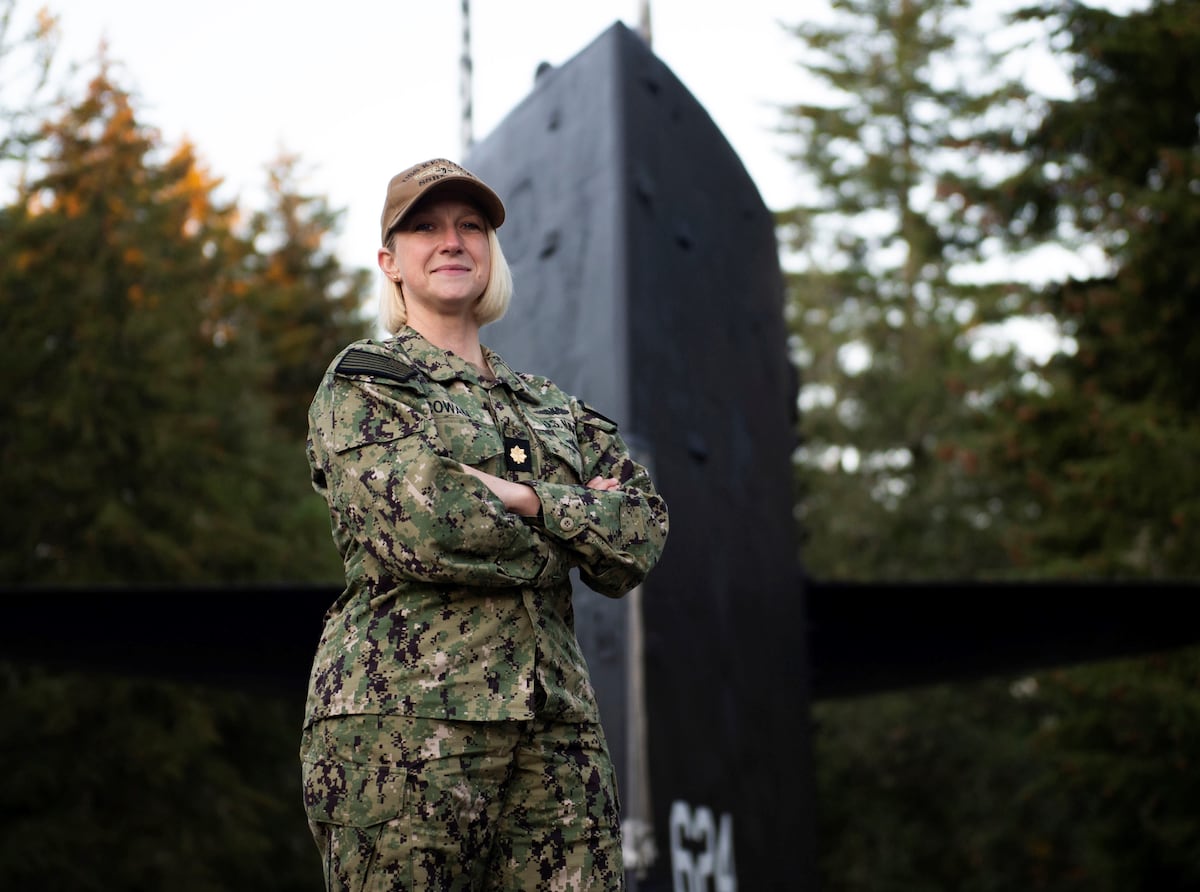Fourteen years after the Navy began integrating women into submarine crews, the population of enlisted women and officers in subs continues to grow steadily year-over-year — and the service projects it will name the first female submarine commanding officer by 2028.
That’s according to a briefing presented by Lt. Victoria Parrish, the Navy’s Women in Submarines coordinator at Submarine Force Atlantic.
For fiscal 2024, there were 87 female officer accessions and 400 enlisted accessions, she told the Defense Advisory Committee on Women in the Services at its quarterly meeting near Washington. That represents 20.3% of officer accessions and 9.5% of enlisted. Fiscal 2024 also represented the largest jump in female enlisted accessions since integration began, rising from 271 the previous year for an increase of nearly 48%.
In all, though, 712 women are currently assigned to submarines, making up just under 5% of a total sub force of more than 15,000.
While representation remains modest, enlisted women are remaining in the sub community at higher rates than their male counterparts, Parrish’s data showed. From fiscal year 2017 to 2024, enlisted women submariners re-enlisted at a rate of 74.9%, 1.1% higher than enlisted men.
While retention rates for officers have fluctuated widely in recent years, female officers in year groups 2010 to 2016 show a department head retention rate of 29%, 1.5% higher than their male peers.
Parrish noted that the small numbers of women were responsible for large rate fluctuations and limited how much could be read into retention data.
“If just a couple more or less female officers decided to sign a contract, those retention rates could significantly change,” she said.
That said, it’s clear the Navy has made great strides toward its stated goal of full gender integration aboard submarines, despite a troubled start and delays in ushering the first class of subs designed with accommodations for women into the fleet.
Female officers were the first to join the sub community in 2010 after then-Defense Secretary Robert Gates lifted a ban on women in subs.
In 2015, the Navy began training enlisted female submariners as well, welcoming a female chief petty officer to the community in 2016, shortly after the Defense Department struck down all prohibitions on women serving in any military role.
These early years saw a series of criminal incidents in which female crew members were secretly recorded by their male peers in showers and changing areas, leading to service investigations and discipline.
Despite these disturbing episodes, the population of women in the community continued to grow each year.
In 2021, the Navy announced its plan to integrate 33 boat crews by 2030. This year, the service updated the projection to 39 integrated boat crews by 2033. The 2021 goal, Parrish said, was spurred by an interest in joining and staying with the submarine community that took the Navy by surprise.
“What we had originally projected for female officer retention was assuming it would mirror the nuclear Surface Warfare female officer retention of 12.5% to 15%,” Parrish said. “Well, it exceeded our expectations. So, we’re actually at 25%-plus. And then also we confirmed that there was robust interest at officer accession sources. So this ultimately led us to increase our plan.”
The first sub designed with berthing for both men and women, the Virginia-class submarine USS New Jersey, was delivered to the Navy in April. Though the Virginia class is running up to 36 months past its contracted delivery dates, a second sub in the class, the USS Iowa, is expected to join the Navy later this month.
The only sub classes that are not slated to have women join their crews are the Los Angeles and the Seawolf, both scheduled for upcoming deactivation, Parrish said.
The Navy, Parrish said, is targeting a female population of at least 20% for each integrated crew, though it sometimes falls short of that goal.
“One of the reasons 20% was sought after was based on a [CNA] study that showed at around 20% population of a group within a whole population, you have less likelihood that you will have that group marginalized,” Parrish said. “And those members would feel more as individuals vice just a member of a minority group.”
Female leadership cadres are growing, though.
To date, according to the briefing, 44 female officers are serving or have served as a submarine department head and four women have been designated as submarine executive officers. Under a gender-neutral detailing process, two of the three female XOs currently serving are leading non-integrated boat crews.
One woman is now serving as a chief of boat, the top enlisted advisor to a submarine leadership team; and a female engineering department master chief is in training and set to report to her sub in 2026.
Parrish told Military Times the Navy’s projection about having the first female submarine CO by 2028 was based on inventory and population planning, rather than a current candidate in the pipeline.
The Navy’s ability to go above a 20% proportion of women on submarines is limited only by senior female leadership in place, Parrish said.
She suggested that the service could use policy waivers to make exceptions to requirements such as having a female chief onboard in order to get more female submariners out to sea.
“You’ve seen in the accessions; we’ve got more and more people. The word is getting out that you can have an adventure of a lifetime and serve on the most technologically advanced submarines with the most brilliant and capable individuals in our nation,” she said.
“As [the number of] overall women in the Navy increases, hopefully every submarine population will reflect the same.”
Read the full article here





